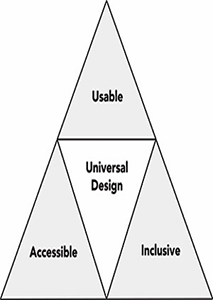Equity, Diversity, and Inclusion Policy Audit Factors
Equitable School Structure
An equitable school embodies an environment that cultivates practices and content, which enable students and educators to perform at their highest level (Bell, 2016).
Factors of equitable schools include the following:
 A quantifiable and direct mission statement, which outlines the priorities of providing
equitable access, procedures, treatment, and outcomes for all students, regardless
of race, ethnicity, gender identity, induvial abilities, or socioeconomic status.
A quantifiable and direct mission statement, which outlines the priorities of providing
equitable access, procedures, treatment, and outcomes for all students, regardless
of race, ethnicity, gender identity, induvial abilities, or socioeconomic status.- Scaffolds cultural competency of educators, staff, and students through inclusive historical teachings of various cultural backgrounds, textual linage techniques, and information resources.
- Collaborates with parents, business community officials, and civic/community organizations to develop support mechanisms and increase knowledge and skills in civic learning, agency, and participation for all students.
Equity Criteria Checklist
| School Policy Criteria/Questions | No | Yes | Needs Improvement |
|---|---|---|---|
| Does the school have an educational equity policy? | |||
| Does the policy align with the equity priorities publicized by the local educational agency and state educational agency? | |||
| Do educators, staff, students, parents, and key stakeholders have access to this policy? | |||
| Is the policy monitored quarterly for its proper implementation? | |||
| Is there a designated process and external equity review board for reported complaints? | |||
| Did all key stakeholders (e.g., staff, parents, students, and community leaders) participate in the development of an equity plan? |
| School Administration Criteria/Questions | No | Yes | Needs Improvement |
|---|---|---|---|
| Is there a process for school administrators to identify equity issues? | |||
| Is the school leadership professionally trained to develop and maintain equity strategies? | |||
| Is there an established and standard methodology, as outlined by the State to monitor significant disproportionality based on race and ethnicity in special education? | |||
| Is school assessment data frequently collected and analyzed to respond to the effectiveness of equity initiatives? | |||
| Are observational assessments conducted by school administrators to assess the actions of equity, fairness, and inclusion by all school staff? | |||
| Have resources been identified for students who are culturally and linguistically diverse? |
| School Climate Criteria/Questions | No | Yes | Needs Improvement |
|---|---|---|---|
| Does the code of conduct between educational officials, parents, and students incorporate the school's equity principles? | |||
| Are the parents, community members, and key stakeholders involved in planning school events? | |||
| Are scholars who are culturally and linguistically diverse invited to school learning functions? | |||
| Do school visual, print, and non-print materials depict people of color and varying ethnic backgrounds positively? | |||
| Does the library have the capacity to accept requests from students and educators to gain access to cultural texts and resources? | |||
| Are critical educational issues addressed in ways that do not marginalized certain groups? |
| School Standards and Curriculum Development Criteria/Questions | No | Yes | Needs Improvement |
|---|---|---|---|
| Are all teachers involved in curriculum development to meet standards? | |||
| Have all educators received training to recognize microaggressions? | |||
| Are teachers provided classroom lessons to spark dialogue and counter the effects of internalized biases? | |||
| Does the curriculum examine the perspectives and contributions of people of color in all subjects? | |||
| Are all students held to the same standards? | |||
| Is there a standardized protocol for instructional modifications for students who are unable to meet the standards? |
Checklist Summary
 The trajectory of educational equity policy has become more imperative in providing
affectatious leadership to school leaders as policy change is substantial and rapid
throughout the United States (Hoy & Miskel, 2006).
The trajectory of educational equity policy has become more imperative in providing
affectatious leadership to school leaders as policy change is substantial and rapid
throughout the United States (Hoy & Miskel, 2006).- The education policy directions have displayed significant need for educational leaders to adopt the equity values demarcated in newly distributed policies within education (Dye, 2000).
- Since teaching is socially constructed, educators must understand the specifics of policy assurance and how teacher and student identities are formed in social settings (Spradlin & Parsons, 2011).
- Educational leadership policy audits ensure that schools adhere to equitable tenants by warranting successful academic outcomes through appropriate resources and instructional strategies for all scholars (Murphy, 1998).
- Educators must deliver educational services in accordance with federal, state, and local strictures to safeguard educational equity (Schimmel, Fischer, & Stellman, 2007).
- The legal parameters of providing an equitable education influence the actions of teachers, students, parents, and administrators (Alexander & Alexander, 2012).
- Educational equity segments within American public school law is paramount in disseminating legal requirements and identifying gaps in educational leadership policy to produce changes to policy and practice (LaMorte, 2011).
Use of Universal Design
Universal Design benefits all students, especially students with varying learning abilities in schools that adopt accessibility principles (Spradlin & Parsons, 2011).
The seven principles of Universal Design include:
 Equitable Use: The school design is useful and marketable to people with diverse abilities. Example:
Providing digital and audio formatted textbooks for students within the classroom.
Equitable Use: The school design is useful and marketable to people with diverse abilities. Example:
Providing digital and audio formatted textbooks for students within the classroom.- Flexibility in Use: The school design accommodates a wide range of individual preferences and abilities. Example: Teachers accepting multiple options for submitting an assignment as a voice recording and/or videorecording.
- Simple and Intuitive Use: The simplification of the school design allows students and educators to understand, regardless of the user's experience, knowledge, language skills, or current concentration level. Example: Recording teachers lectures for scholars to revist material covered.
- Perceptible Information: The school design communicates necessary information effectively to the student, regardless of ambient conditions or the individual's sensory abilities. Example: Having a centralized announcement system with visual, auditory, and kinesthetic characteristics.
- Tolerance for Error: The design minimizes hazards and the adverse consequences of accidental or unintended actions. Example: Software controls that provide guidance when the student makes an inappropriate selection.
- Low Physical Effort: The design can be used efficiently and comfortably and with a minimum of fatigue. Example: Doors with sensors that automatically open for people.
- Size and Space for Approach and Use: is provided for approach, reach, manipulation, and use regardless of user's body size, posture, or mobility. Example: Assemble the classroom seating arrangement in a circular manner that creates enough room for all students to engage with other students.
Integration of Culturally Responsive Pedagogy
Culturally responsive pedagogy involves teachers’ and educators’ commitment and methods to engage in critical reflection, dialogue, and social activism with students as a part of their curricula. To do this, they must:
 Balance the emotional and cognitive components of the learning process, paying attention
to safety, respect, and valuing behaviors.
Balance the emotional and cognitive components of the learning process, paying attention
to safety, respect, and valuing behaviors.- Acknowledge and support their students’ individual experiences while illuminating the realities of institutional discrimination.
- Create opportunities for meaningful social relationships and group cohesion to form in their classrooms.
- Utilize reflection exercises and other student-centered learning strategies, including problem posing and self-reflection.
- Value personal growth, awareness, and change for themselves and as outcomes of the learning process while considering student interest and readiness.
Culturally responsive policy praxis demonstrates how out-of-school programs enable students to increase their political efficacy and political participatory skills (Gay, 2010).
By linking the students’ cultural backgrounds within the community, the students will be vested intellectually and politically, and their desire for democracy is maximized (Gay, 2010).
Created By: María T. Colompos-Tohtsonie, MPPA, August 27th, 2021
References
 Alexander, K., & Alexander, M. (2012). American public school law (8th ed.). Belmont,
CA: Wadsworth/Cengage Learning.
Alexander, K., & Alexander, M. (2012). American public school law (8th ed.). Belmont,
CA: Wadsworth/Cengage Learning.- Bell, N. (2016, February 3). Criteria for an equitable school–equity audit. MAEC, Inc.
- Dye, T. R. (2000). Top down policymaking. New York, NY: Chatham House Publishers.
- Gay, G. (2010). Culturally responsive teaching: Theory, research, and practice (2nd ed.). New York, NY: Teachers College Press.
- Hoy, W., & Miskel, C. (2006). Contemporary issues in educational policy and school outcomes. Charlotte, NC: Information Age Publishing.
- LaMorte, M. (2011). School law: Cases and concepts. New York, NY: Pearson College Division.
- Murphy, J. (1998). Preparation for the school principalship: The United States story. School Leadership & Management, 18(3), 359–372.
- Nivi, G., Itai, B., Eran, V., & Amnon, R. (2020). Can leadership transform educational policy? Leadership style, new localism and local involvement in education. Sustainability, 12(22), 1–19.
- Schimmel, D., Fischer, L., & Stellman, L. R. (2007). School law: What every educator should know. Upper Saddle River, NJ: Prentice Hall.
- Spradlin, L. & Parsons, R. (2011). Diversity matters: Understanding diversity in schools. (2nd ed.). Belmont, CA: Thompson.
- The Center for Universal Design in Education. www.uw.edu/doit/CUDE/